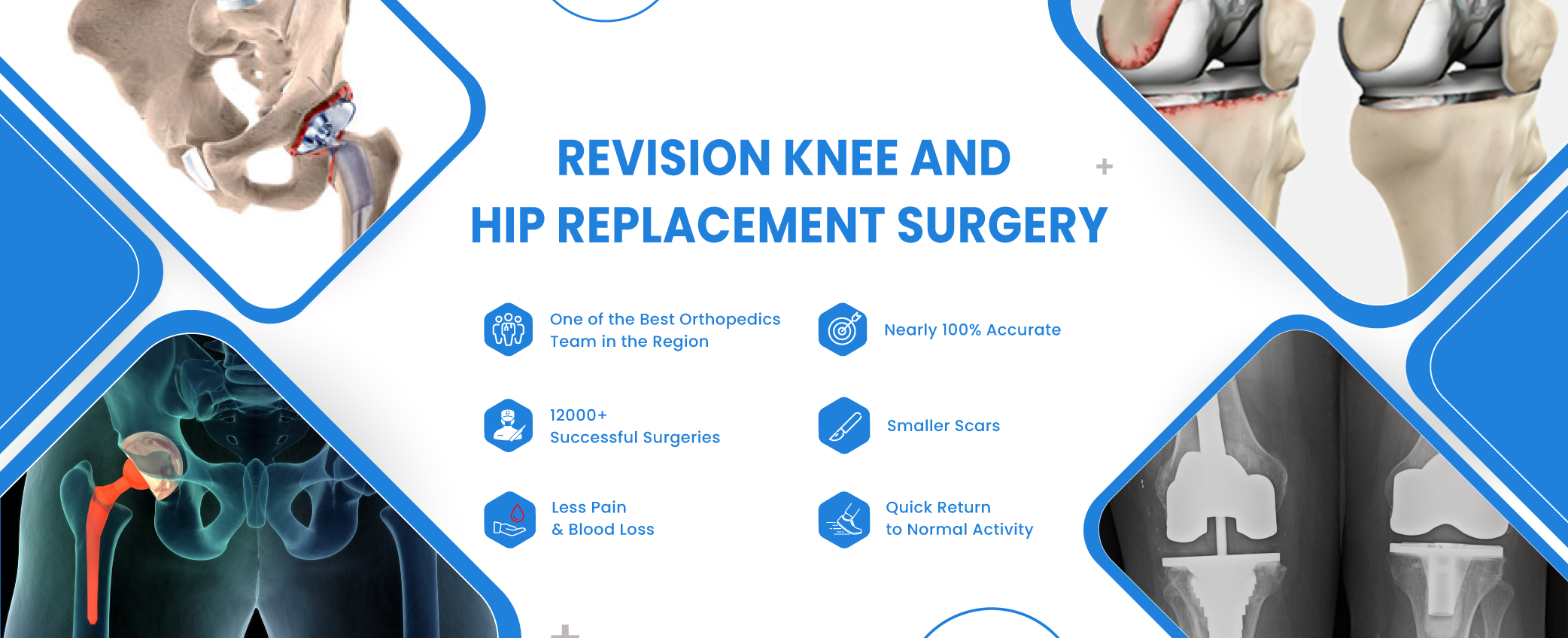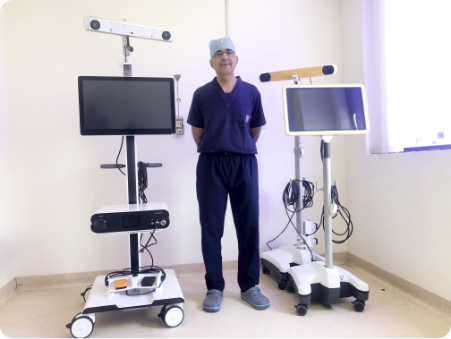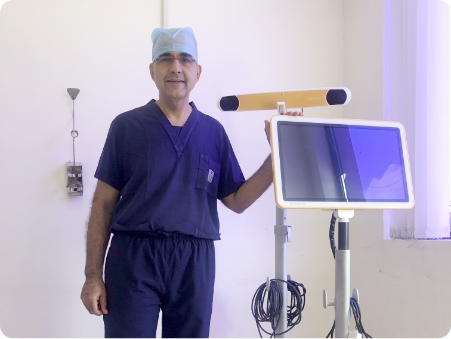Dr. Anoop Jhurani is an exceptionally talented orthopedic surgeon who specializes in revision knee and
hips replacement surgery in Jaipur, India, using computer-assisted techniques.
Why should you choose Dr. Anoop Jhurani for revision surgery?
Dr. Anoop Jhurani is one of the revision knee and hip replacement surgeons in Jaipur, India, and performs these procedures regularly. He has great experience with revision surgery and is one of the few surgeons in Jaipur, India, who can perform these procedures. We know him for his excellent results. Hip replacement surgery is Dr. Anoop Jhurani’s expertise, and he has performed many complicated and revision hip replacements.
One of the best methods to enhance your quality of life is through knee and hip replacement surgery. Sadly, with time, some of these treatments may stop working and your pain may come back. Orthopedic surgeon Dr. Anoop Jhurani performs a revision hip and knee replacement surgery in Jaipur, India.
Besides presenting live knee and hip replacement surgeries, they regularly invite him to speak at national and international organizations. As an orthopedic surgeon with years of experience, Dr. Jhurani has carried out thousands of revision procedures. Call or use the online booking to arrange a consultation with Dr. Jhurani to talk about revision surgery.

Benefits of revision hip and knee surgery:
These are some benefits of revision surgery:
- Relieve discomfort
- Boost mobility
- Strengthening and coordination
- Decrease the likelihood of hip or knee dislocations
- Treat infections
- Increase the joint’s stability

What signs would show a necessity for a second hip replacement procedure?
The following factors affect a hip replacement implant’s longevity:
- Weight of the patient
- Type and material of the implant used
- A hip implant that feels loose or unstable
- A hip implant that frequently dislocates
- High activity level
- Fracture
What is a common reason for knee revision surgery?
As people age, some of those joints wear down. When this happens, a further treatment termed a revision arthroplasty may be required. The method requires the removal of the original components and their replacement with new ones.
The following are the most frequent causes of knee revision surgery:
- Loosening of the attachment between the artificial joint and the bone
- Joint infection that may cause stiffness, discomfort, or loosening
- Implant instability that could lead to joint dislocation (uncommon)
- Wearing out of one or more implant components that cause replacement
- Replacement of the implant is necessary if it breaks

How much time is required for recovery following revision hip and knee replacement surgery?
After the revision hip and knee replacement procedures, Dr. Jhurani offers each of his patients a unique recovery schedule. Following surgery, the doctor advises daily physical therapy. After your operation, Dr. Jhurani will check in with you frequently to monitor your progress. X-rays and other diagnostic techniques are used throughout these tests to help Dr. Jhurani accurately assess your progression. After six months, patients usually recover completely.
FAQ
What happens if you get knee revision surgery?
A primary knee replacement’s post-operative treatment is quite similar to that of a second knee replacement. Physical therapy, blood management, as-needed pain medication, antibiotics, and some form of blood clot prevention are all included in the treatment plan. After the procedure, the joint may be protected with a brace or splint.
What are the reasons for hip pain?
The primary goal of hip revision surgery is to fix an artificial hip implant that has become loosely attached to the bone, causing aberrant mobility and pain in the patient. The goal of hip revision surgery is to heal the hip and get it back to where it can function normally.






